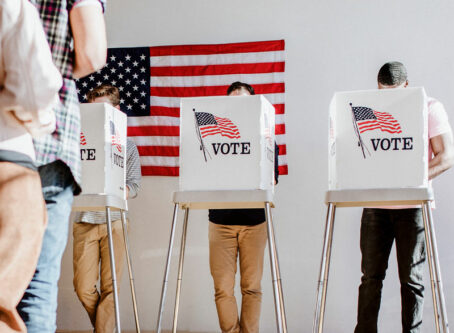Governor elections decided in 11 states
Governor elections from Vermont to Washington were decided on Nov. 3.
In all, voters across the country cast their ballots Tuesday for about 80 % of the elected officials who make up federal and state government, as well as many local offices.
Understandably, many headlines in the national mainstream media focused on the presidential election and congressional races. However, voters made many other significant choices when they cast ballots.
Although federal rules govern much of the trucking industry, the power of the states has a major impact on professional drivers’ daily lives in terms of tolling, truck rules, as well as taxes and fees.
Republicans make slight gain in governorships
Election Day saw voters in 11 states select governors. The chief executives have a far-reaching effect on government, including transportation funding for the foreseeable future.
Before Election Day, Republicans held a 26-24 edge among governors nationally. Afterward, the GOP claims a margin of 27-23.
Of the states voting for governor, one race was for an open seat due to a term limit prohibiting a run for re-election by Montana Gov. Steve Bullock, a Democrat. With 54.1% of the vote, according to The Associated Press, Republican Greg Gianforte defeated Democrat Mike Cooney in the Nov. 3 election.
The remaining incumbent governors, with the exception of one, won their respective races.
Sitting Democratic governors in Delaware, North Carolina and Washington retained their offices. Incumbent Republican governors in Indiana, Missouri, New Hampshire, North Dakota, Vermont and West Virginia were also victorious.
Utah Gov. Gary Herbert decided not to seek re-election. Republican Spencer Cox won the Nov. 3 election with 64.3% of the vote according to the AP, defeating Democrat Chris Peterson.
Some races included governors who have made notable decisions on transportation issues.
In 2017, Indiana Gov. Eric Holcomb signed into law a bill to increase the state’s gas tax and diesel tax by 10 cents. In addition, the state’s surcharge tax on diesel nearly doubled.
A separate provision in the bill opened the door to additional toll roads in the state. The governor later reversed course on the toll option for Interstate 465.
In 2019, Delaware Gov. John Carney signed into law a bill that allows the state and local governments to install and use vehicle height monitoring systems.
A year ago, Washington Gov. Jay Inslee signed into law a bill to change allowable parking time at rest areas from eight hours within a 24-hour period to fewer than eight hours. Commercial vehicles are exempt from the new rules. Additionally, affected trucks are permitted to park at rest areas for up to an hour beyond federally mandated rest periods.
Additionally, new governors were elected in Montana and Utah.
Looking ahead
With this year’s elections concluded, both parties turn their attention to 2022. At that time, 36 states will elect governors. Of those, 20 states have Republicans in the executive suite and 16 states have Democrats leading state government.
In eight states, four Republicans and four Democrats are term-limited and cannot pursue another term.
GOP governors in 16 states can run for re-election and Democrats in 12 states can do the same. LL









